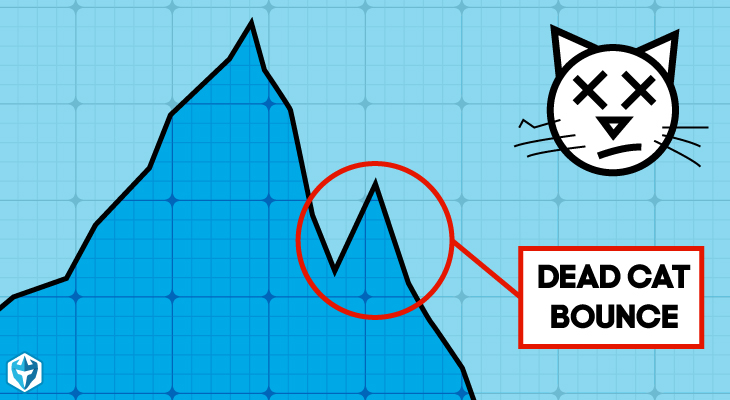

In trading, dead cat bounce refers to a temporary recovery that happens after a long decline which is usually followed by a downtrend. It can be defined as the chart phenomenon that happens during bearish moves. Basically, it is a long awaited correction from a brutal bearish trend. As a market jargon, it is a trap for traders who are always looking to go long.
History
The term was first used in 1985 during a review of the Singaporean and Malaysian stock markets. Both markets bounced back after undergoing a hard fall as a result of the recession that happened during the same year. Financial Times journalists Wong Sulong and Horace Brag were quoted as describing the events as “what we call a dead cat bounce.” It is believed that the term was derived from the idea where a cat will bounce after falling from a great height.
It is common for traders and investors to become fearful and that is why DCB is used to identify price levels for potential breakouts. According to financial experts, the DCB pattern involves a gap that happens during a downtrend. This gap is created by unexpected news that appears after or before normal market hours.
How to spot a dead cat bounce
It can be quite tricky to spot a DCB even for experienced traders and investors. Thankfully, there is a solid approach that can allow both to spot a DCB on the trading charts. As a price pattern used by technical analysts, the first signal is the confirmation of the pattern which does not appear on the price bounce.
At first, it may appear as a reversal followed by a downward price move. This is how it becomes a DCB when the price drops below its prior low and the reason why short term traders profit from it. Investors will also try to use the temporary reversal as a good opportunity. They do this with the goal of initiating a short position.
Here are three brief points to help you spot the DCB
1. Start by identifying a security asset with a strong bearish trend
2. This should be followed by spotting a price increase that breaks the downtrend slope
3. Finally, wait for the price to break the trend set.















